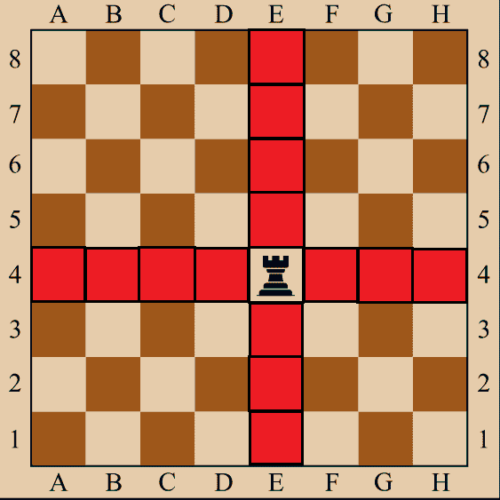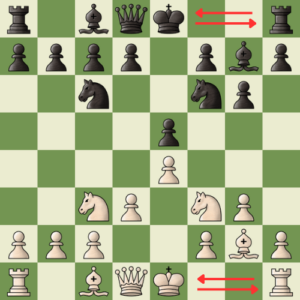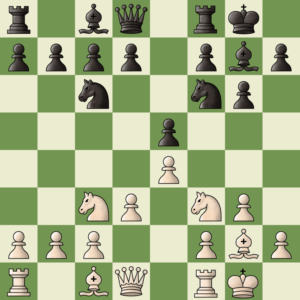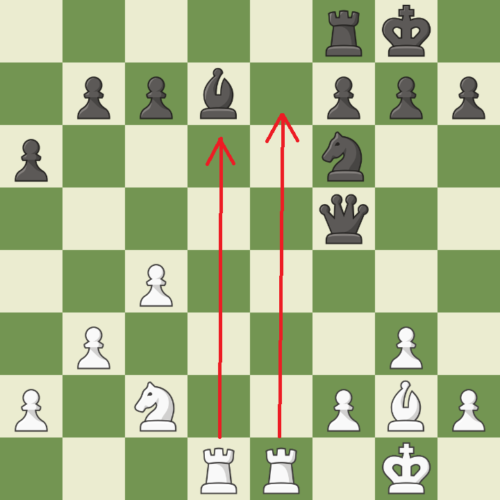The rook is one of the most powerful pieces in chess. It can control large areas of the board. Mastering the rook’s movements is crucial for success in chess. Beginners often ask, “Can a rook move backwards in chess?” The answer is yes. The rook can move both forward and backward along the ranks and files. In this article, we will explore the rook’s movement in detail. We will also discuss how its versatility can enhance chess strategy.
Basics of Rook Movement
The rook is represented as a small tower-like structure on the chessboard. In setup for the standard arrangement, it is placed at the corners of the board. It will be occupying squares a1 and h1 and squares a8 and h8. In its movements, it can go to any number of squares horizontally, that is along ranks, or vertically, that is along files, straight. In principle, this makes the rook flexible and strong. Now, look in steps:
- Horizontal (Rank) Movement: The rook can move on any rank that it is on. Suppose the rook is placed on the e4 square; it can go to any square on the rank of fourth-e1, e2, e3, e5, e6, e7, or e8-so long as other pieces are not in its way.
- Vertical (File) Movement: Just like that, the rook may travel along any file upon which it sits. If the rook is sitting on square e4, it may go up or down the e-file to squares e1, e2, e3, e5, e6, e7 or e8.
- No Diagonal Movement: Unlike the bishop or queen, the rook does not have the ability to move diagonally. This restriction forces players to use the rook strategically by placing it where it can exert influence on long lines of ranks or files.

Can the Rook Move Backwards in chess?
Yes, the rook can move backward. This backward movement occurs when the rook travels down its current file toward the player’s side of the board. Suppose a white rook is on the e4 square; it could then move backward to any square on the e-file: e1, e2 or e3.
One of the most salient features about the rook in playing chess is its easy maneuverability backward in setting up the chess piece in a defensive position or retreating from a forward position to regroup for an attack. Going backward provides that layer of flexibility which may be the difference between salving the game and losing it.
The Role of the Rook in Castling

Before Castling

After Castling
The Castling is a special move in chess that involves the rook. As a matter of fact, this is the only move in chess where two pieces are moved at the same time: the king and the rook. This can be useful for two reasons: one, to get the king to a safer position; two, to get the rook out into the middle of the board where it can be more dynamic. Following is how castling works:
- The king moves two squares towards the rook.
- The rook “jumps” over the king and is placed on the square next to it.
There is kingside and queenside castling. In both cases, the importance of a rook’s movement for performing castling underlines the problem of its movement across ranks and files. Castling gives a chance to the rook to get into an active file from which it would be able to control the center or support other pieces.
Utilizing Backward Rook Moves in Defense
The backward movement of the rook often forms an integral part of the strategy on the board in many games of chess. Sometimes, during your opponent’s attack, your rook may have to retreat with the view to protect vital areas of your position. Let’s look at examples where backward rooks moves might be a good defensive decision:
- Protecting the King: For if your opponent is trying to checkmate your king, then it may be necessary that a rook retreats to block a check or guard an important square.
- Supporting other works: The rook serves as protection for your other more important pieces in case they are under attack. It may block attacks aimed at your queen or bishop. A well-set-up back rank rook can effectively guard those pieces.
- Regrouping for a Counterattack: Sometimes, a rook needs to retreat to reach the safest place in preparation for a counter-attack. This retreat provides protection by moving backwards. While retreating, the rook remains active either in defense or along coordinating lines for a prospective attack.
Backward Rooks Moves in Offense
Backward mobility of rooks can turn out very important in implementing an attack. Probably the most relevant theme in many games of advanced level is the doubling of rooks – when two rooks are put on the same file or rank to reinforce their attacking possibilities.
- Rook Lifts: This is an important attacking technique where the rooks moves vertically. The rook often moves backward before being transferred to another file or rank. A specific rook lift involves moving the rook from the first rank to the third rank. After this lift, the rook can swing across to an open file to prepare for an attack.
- Backward Rook – preparing a file attack: You would retreat the rook backward along a file-not to get into danger-and afterward reposition it to open files. Once the rook is on the open file, it then becomes an important attacking force in targeting weaknesses from your opponent’s camp.
Importance of Open Files for the Rook
To maximize the rook’s power, it is crucial to place it on open or semi-open files, where it has unimpeded movement. A rook on an open file controls every square on that file and can easily switch between attacking and defensive roles. Moving the rook backwards or forwards, in this case, allows for greater mobility and influence over the game.

Fig : Open File
Endgame Strategy with the Rook
Quite often in the endgame, the rook becomes the strongest piece in positions where the board has become more open and other pieces have been exchanged. This piece is quite effective in the endgame because it can move far back and forward to carry out the following tasks: controlling the opponent’s king, supporting pawns for promotion, and limiting hostile king mobility.
- Backward Plays for Defense: In endgames, you are often compelled to support your rook. This support is necessary either to save pawns or to cut off the opponent’s king from large areas of the board.
- Rook and King Coordination: Rooks can work especially well in coordination with the king in the endgame. In this phase, the rook’s backward movement can cover your king as it advances. Additionally, the rook can block the opponent’s king to restrict its movement.
Conclusion
In summary, the rook can indeed move backwards in chess, and this ability adds to the piece’s overall strength and flexibility. Understanding the rook’s movement, including its backward mobility, allows you to use it effectively in both offensive and defensive strategies. Whether you are castling, defending critical areas, or preparing for an endgame victory, the rook’s ability to move backward is just as crucial as its ability to move forward.
Mastering rook movement will enhance your overall chess play, and knowing when and how to move the rook backwards can help you navigate complex game situations with greater confidence.









